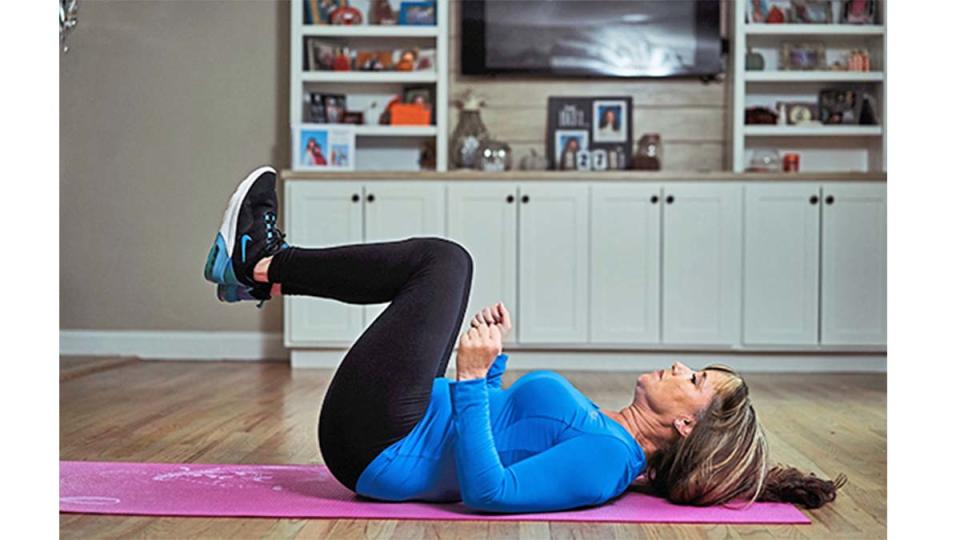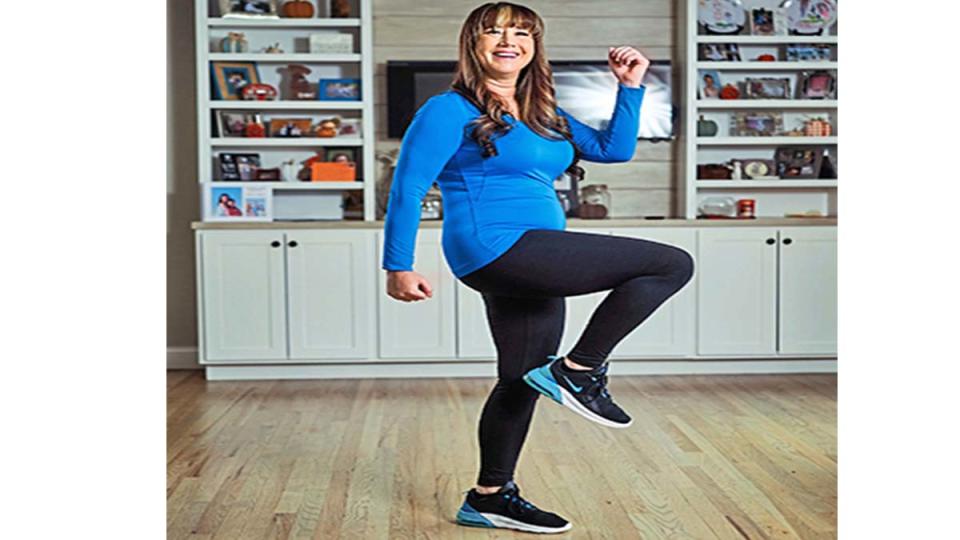Pain in the Back? These 4 Exercises Help Alleviate Chronic Aches
Ten years after suffering an L2 compression fracture later exacerbated by an injury at work, Laura Barbella was in near constant agony. She'd seen doctors, physical therapists, and a chiropractor — and tried every treatment imaginable, including massage, electrical nerve stimulation, acupuncture, epidurals, and ablations. Nothing worked. Unable to so much as lean over the sink to brush her teeth without immense pain, she resigned herself to a life of pain.
Things changed, however, in early 2021. That's when Barbella saw a Facebook post from Chris Bohlin, a personal trainer certified by the National Academy of Sports Medicine and the creator of The Protocol (Protocol-Fitness.com). The post read: "I help people with severe pain find relief and regain mobility without drugs and surgery."
“I didn’t know what The Protocol was," Barbella says, "but I was willing to try anything." Desperate, she texted him asking for help.
Barbella’s Introduction to the Protocol
“Chris explained that The Protocol is comprised of four positions — The Back Position, Seated Chair Position, Squatted Twist Position, and Running Position — that reverse body trauma using a process of realignment," Barbella says.
"It’s a physical meditation, similar to how mental meditation heals the mind," Bohlin explains. ‘It removes friction and reestablishes balance so people can move with freedom."
At their first session, Bohlin created a blueprint of Linda's pain, and guided her toward positions that generate circulation and remove tension. Barbella says the relief was instant. She continued working with Bohlin three times per week, and performed The Protocol's movements at home on the days between their meetings. Improvement, she said, was incremental. Eventually, however, thanks to patience and persistence, she stood up straight, slept better, and the numbness in her right leg — which she was told by her pain management doctor would never go away — subsided.
4 Exercises That Help Banish Back Pain
So what is the Protocol? Bohlin, its practitioner and creator, says it's a series of movements that strengthen the core to create a subtle shift in the body's alignment, releasing tension, and increasing stability. “We start with the first position, which is the most basic, and work our way up to the fourth,” he notes. The key is to adjust the positions to accommodate what your body can do, releasing when you feel strain. Here, are four Protocol poses that are effective for banishing back pain.
1. The Back Position

Lying on the floor, slowly lift your legs; bend your arms at the elbow to make right angles. Flatten your back, press your legs together, make fists, and slightly tuck your chin. Don’t force your body to do anything that feels uncomfortable. “This position spreads the body’s energy equally to ease pain," Bohlin says.
2. The Seated Chair

Sit on the floor, slowly lean back, and lift your legs, striving to make as close to right angles at every joint as you can. You want to achieve the same pose as in the Back Position, but sitting upright. Hold whatever position you can comfortably hold until you start to feel strain in your back or hips.
3. The Squatted Twist

This standing position helps stabilize the lower back. Stand with your legs together and bend your knees, aiming to make right angles at your knees, hips, and ankles. You can let your heels come off the ground.
Fan your arms out to the sides, making right angles at your shoulders and elbows; make fists. If you can, twist your entire body from left to right until you feel strain in your knees, back, or feet.
4. The Running Position

“This position has more movement, so being mindful of how your body feels helps you readjust your alignment, which ultimately removes pain,” Bohlin says. Run or march in place, landing on the balls of your feet. Strive for right angles at your hips and knees and pump your arms with right angles at your elbows. Continue until you feel strain in your knees or feet.
A version of this article originally appeared in our print magazine, First For Women.

